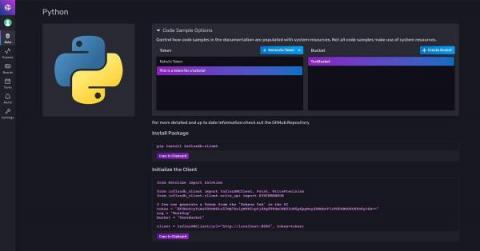Operations | Monitoring | ITSM | DevOps | Cloud
Analytics
The Big Problem With Big Data
The 2022 Australian Open men’s singles final between Rafael Nadal and Daniil Medvedev was epic! I watched it in Australia, which meant I was up until 2 a.m. on a Sunday night. Monday morning’s dog walk was sub-joyful. Medvedev seemed unplayable, taking the first two sets comfortably. But Nadal is a legend for a reason. Point by point, he overran his rival to make history.
Start with Python and InfluxDB
Although time series data can be stored in a MySQL or PostgreSQL database, that’s not particularly efficient. If you want to store data that changes every minute (that’s more than half a million data points a year!) from potentially thousands of different sensors, servers, containers, or devices, you’re inevitably going to run into scalability issues. Querying or performing aggregation on this data also leads to performance issues when using relational databases.
How Are Tech Advancements Positively Affecting Companies Market Agility
Getting Started with C++ and InfluxDB
While relational database management systems (RDBMS) are efficient with storing tables, columns, and primary keys in a spreadsheet architecture, they become inefficient when there’s a lot of data input received over a long period of time. Databases designed specifically to store time series data are known as time series databases (TSDB). For example, an RDBMS might look like this.
What is Karapace?
What is Apache Kafka?
Your Clients Financial Real-Time Data: Five Factors to Keep in Mind
Real-time data is where information is collected, immediately processed, and then delivered to users to make informed decisions at the moment. Health and fitness wearables such as Fitbits are a prime example of monitoring stats such as heart rate and the number of steps in real-time. These numbers enable both users and health professionals to identify any results, existing or potential risks, without delay.
InfluxData Launches InfluxDB University
Live and on-demand trainings simplify application building for faster Time to Awesome™ SAN FRANCISCO – March 9, 2022 – InfluxData, creator of the leading time series platform InfluxDB, today announced the launch of InfluxDB University (InfluxDB U), an online education platform for customers and developers working with time series data.
Class is in Session - Announcing InfluxDB University
At InfluxData, it’s no surprise that we are passionate about time series data. Our team is committed to helping our community understand its capabilities and sharing easier and more efficient ways of working with InfluxDB, Telegraf and Flux. Our end goal is always to deliver faster Time to Awesome™ for our users. To this end, we’re excited to announce the launch of InfluxDB University.











